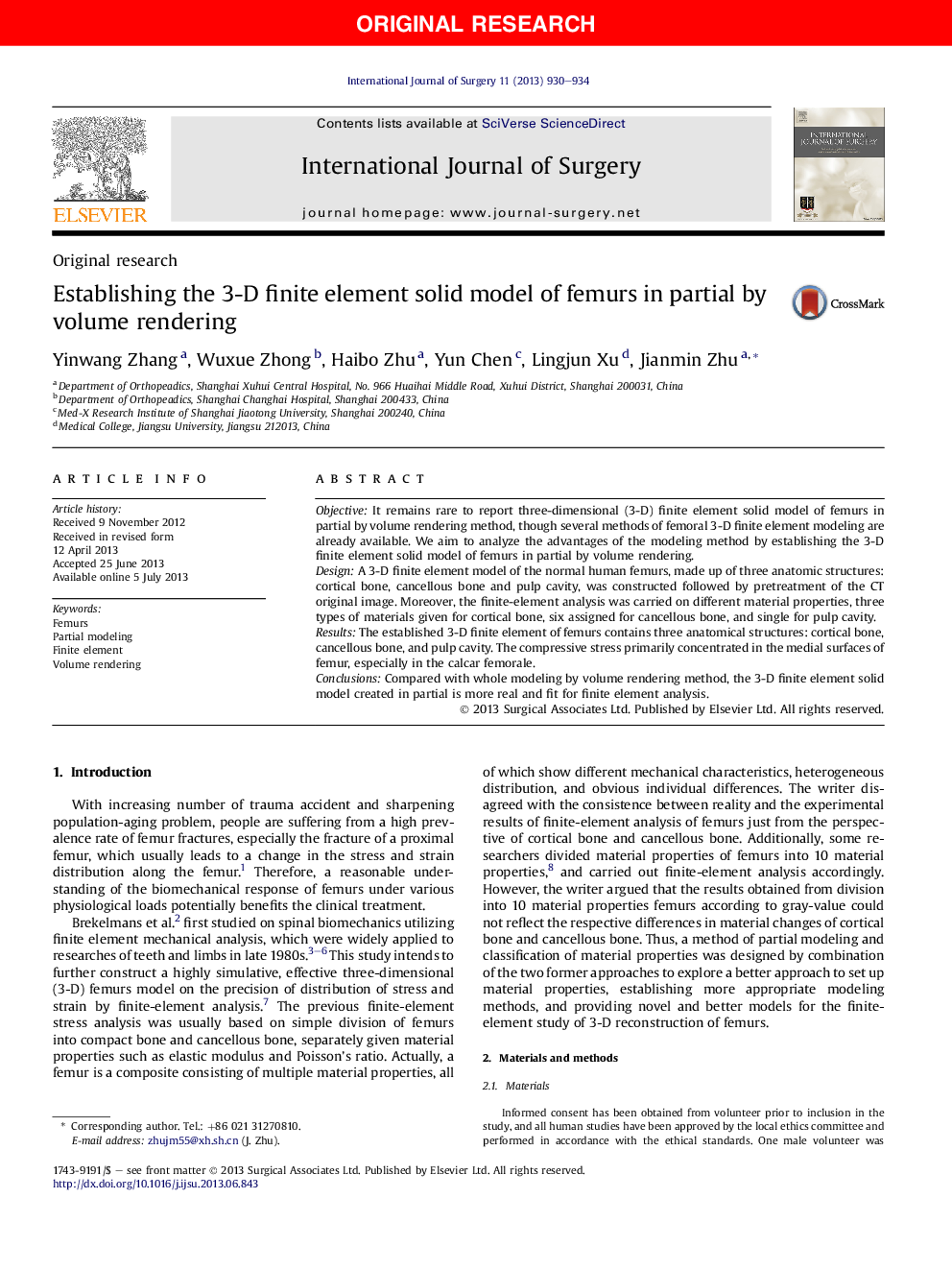| Article ID | Journal | Published Year | Pages | File Type |
|---|---|---|---|---|
| 4286758 | International Journal of Surgery | 2013 | 5 Pages |
ObjectiveIt remains rare to report three-dimensional (3-D) finite element solid model of femurs in partial by volume rendering method, though several methods of femoral 3-D finite element modeling are already available. We aim to analyze the advantages of the modeling method by establishing the 3-D finite element solid model of femurs in partial by volume rendering.DesignA 3-D finite element model of the normal human femurs, made up of three anatomic structures: cortical bone, cancellous bone and pulp cavity, was constructed followed by pretreatment of the CT original image. Moreover, the finite-element analysis was carried on different material properties, three types of materials given for cortical bone, six assigned for cancellous bone, and single for pulp cavity.ResultsThe established 3-D finite element of femurs contains three anatomical structures: cortical bone, cancellous bone, and pulp cavity. The compressive stress primarily concentrated in the medial surfaces of femur, especially in the calcar femorale.ConclusionsCompared with whole modeling by volume rendering method, the 3-D finite element solid model created in partial is more real and fit for finite element analysis.
